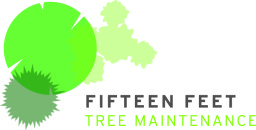
Creating outdoor environments that support learning and provide enjoyable social spaces requires thoughtful landscaping, but also regular maintenance of trees and bushes. Whether as a source of inspiration for budding writers, a cool shady place to eat lunch or a hideout of local fauna, trees are critical to the health and wellbeing of staff and students and the local environment.
School principals, university grounds staff and child care managers all have the task of balancing the great benefits that trees provide, with managing their duty of care to students, staff, parents and members of the public.
Ensuring vehicular access in and out of the grounds, complying with relevant legal and regulatory requirements, plannning contingencies for wind, fire, storms or drought, and keeping an overview of the health and safety of trees in the grounds can keep education providers very busy.
15feet tree services can help you identify and control any risks within your setting, ensuring that children’s safety is paramount.
- We are familiar with the Victorian Department of Education and Early Childhood Development’s requirements in relation to safety planning, and can help you to ensure that all necessary precautions are taken to maximise student safety.
- We are available to work on weekends or during pupil free periods by arrangement.
- We are happy to work with you and maintenance and grounds staff where they exist within the parameters of your general grounds maintenance, environmental, emergency or fire management, asset management and worksafe plans.
- We are fully insured up to $10 million and are fully OHS compliant.
- We can assist you to ensure accurate records of trees on the campus are kept, including management plans for any trees at risk or which may pose a future safety hazard.
- We offer tree inspection, assesment and maintenance services, and can provide annual or bi-annual tree support, including full documentation and reporting.
- We are also happy to undertake urgent works where any human or property risk requires it.
Why are trees important in educational settings?
Trees are critical for students and staff in educational settings, offering a wide range of benefits.
Aside from offering improvements to our air, soil and water and increasing biodiversity, trees and shrubs:
- Provide healthy and beautiful environments for children and young people to play and learn
- Offer shelter from the sun, decreasing the likelihood of skin damage in the harsh Australian summer and providing much needed shade for more delicate plants.
- Act as a windbreak in the colder months
- Improve the energy efficiency of buildings- creating greenr, more sustainable education settings.
- Provide a visual screen or divide sections of the playground
- Help suppress noise pollution, an ever increasing problem in urban environments.
- Fix nitrates in the soil making it more fertile to grow other plants including vegetables in kitchen gardens
- Provide excellent learning resources. Many schools and early childhood providers are developing nature areas to encourage environmental awareness
- Enhance an otherwise unattractive building or site.
- Provide a vital habitat for butterflies, moths, birds, insects and bats.
- Reduce the potential speed and intesity of a bushfire
- Stabilise soil on steep inclines decreasing the likelihod of soil erosion
- Protect soil from drying out in times of low rainfall and drought
Urban tree planting has also been shown to improve student’s pride of place!
How do we manage trees in schools?
Our planning for schools and educational settings involves undertaking a full analysis of your needs.
Context
What benefits do these trees give to this land?
Risk Identification
Is there likely to be any risk to human safety or property from these trees?
Risk Zoning
Is it useful to establish a range of zones to distinguish areas where tree or branch failure might pose a greater or lesser risk (requiring no inspection,
informal observation, formal observation, detailed observation)
Risk Analysis
What is the actual level of risk?
Risk Evaluation
Is this risk acceptable?
Risk Treatment
What action, if any, needs to be taken to treat the risk and preserve as many of the benefits as possible?
Contact us on 0435 086 323 or email to arrange for a free tree inspection and quote.

